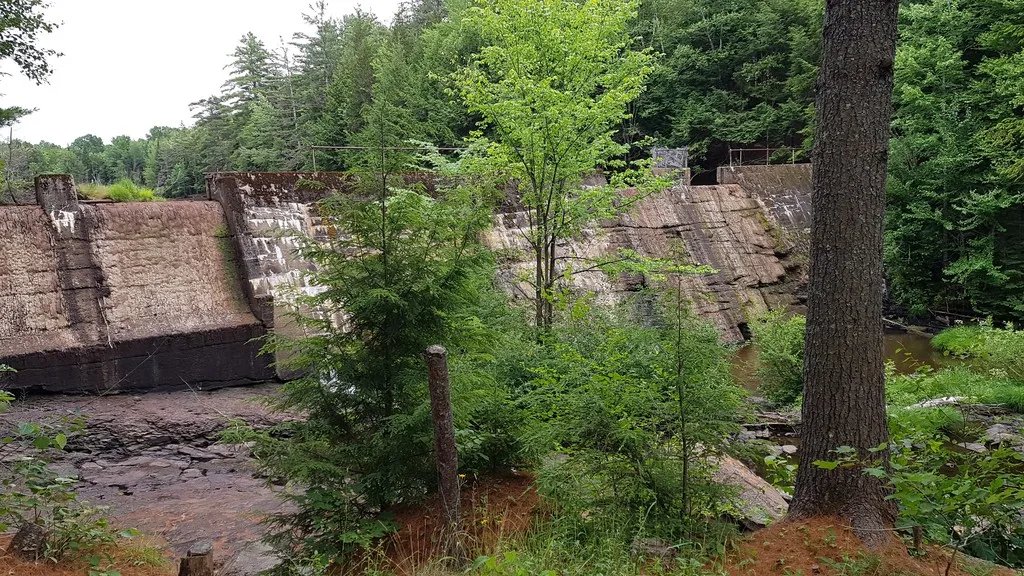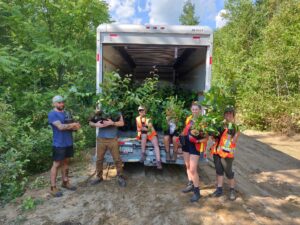Savannah Awde | The Daily Gleaner

The Campbell Creek dam before it was taken down. Photo: Don MacPherson/The Daily Gleaner
As a recipient of this year’s Atlantic Salmon Conservation Foundation, the Nashwaak Rivershed Association will look to monitor salmon activity after the recent removal of the Campbell Creek Dam.
Executive director Marieka Chaplin said the association hopes to use that grant to show that the dam’s removal was key to maintaining a healthy habitat for New Brunswick salmon.
“In 2021, along with a large group of quality partners, we were able to remove the dam on the Campbell Creek, which opened up over 32 square kilometers of habitat for species such as the Atlantic salmon,” she said, “The dam had been blocking their passage.”
That’s an issue when it comes to salmon, she said, as they rely on water travel to “high-quality habitats” for reproduction.
“They need to be able to travel out to cold-water tributaries, and they also need to be able to swim way out to the outer Bay of Fundy to complete their life cycles,” she said.
Until the dam’s removal in 2021, Chaplin said it had been 100 years since salmon had a place to travel for rearing and spawning in the Nashwaak Watershed.
Since then, the association has been collecting data to try and understand how successful the removal has been to regenerating the fish’s population in the river.
“One of the things that we’re going to do with the funding is do [environmental DNA] testing for Atlantic salmon,” she said. “That involves getting water samples from a couple different locations along the creek and seeing if they test positive for outer Bay of Fundy salmon or not.”
If the samples are positive, Chaplin said, it gives the group a “strong guarantee” that the salmon are now using that newly freed stream.
“Certainly it’s been exciting, because that species is being considered for listing on the endangered species list,” she said.
“Our human habitats are better places when we have higher species biodiversity. So we want to create more good spaces for salmon, or American eel, or any other type of endangered or native species here in our province.”
She noted that the association is always interested in helping private landowners with dams on their properties.
The grant will also help the Nashwaak team evaluate road culverts for fish passage.
“The goal of these projects is to improve habitat for this important, nearly listed endangered species,” she said.

